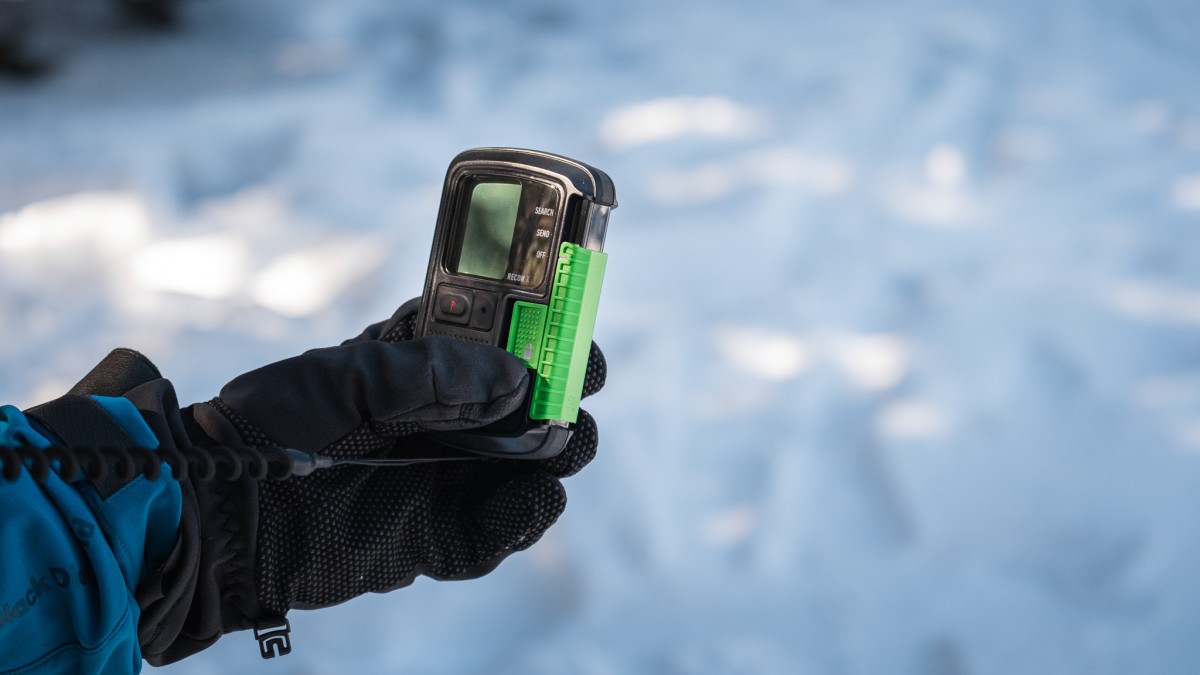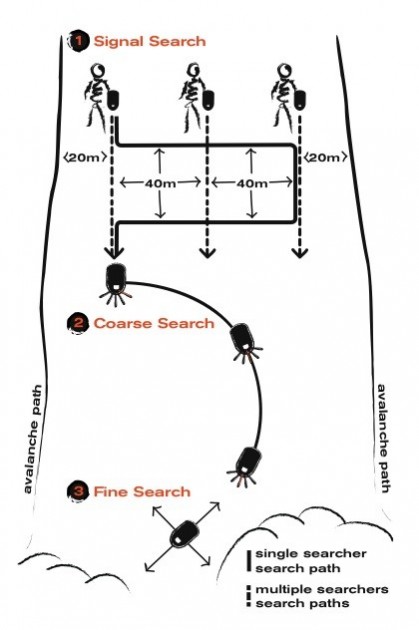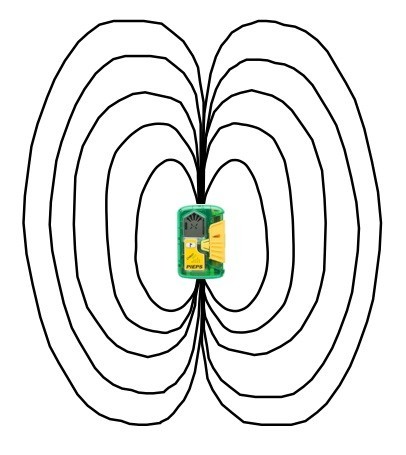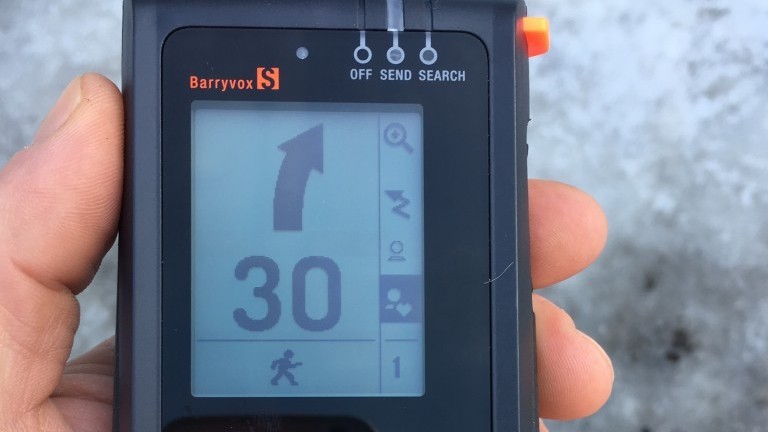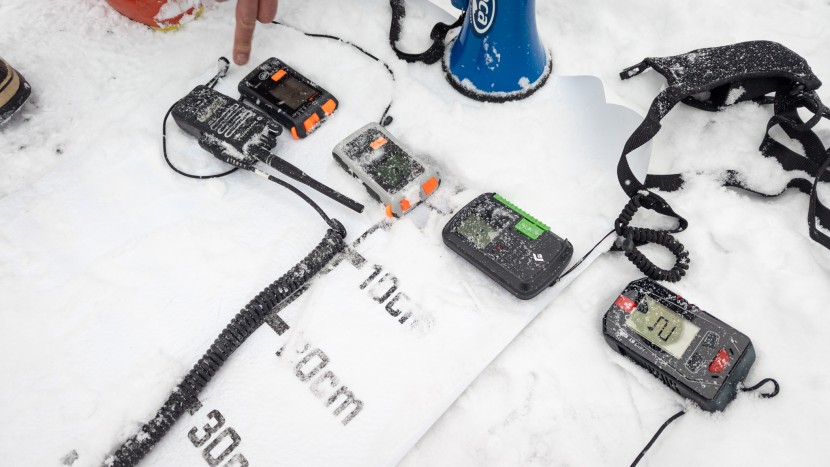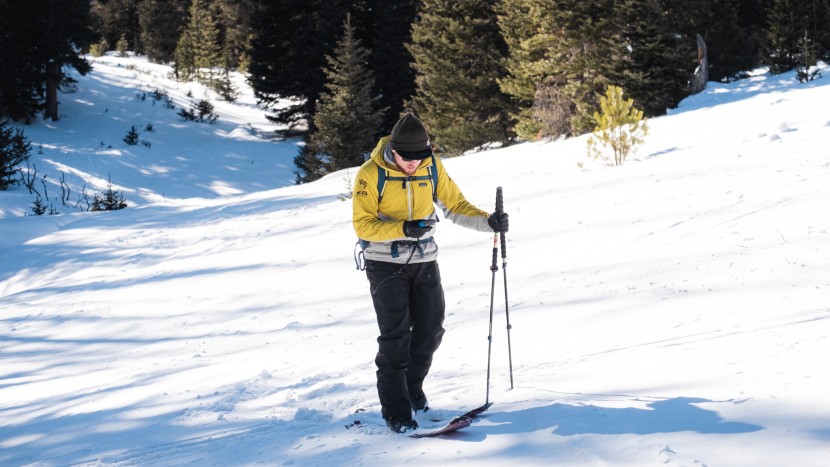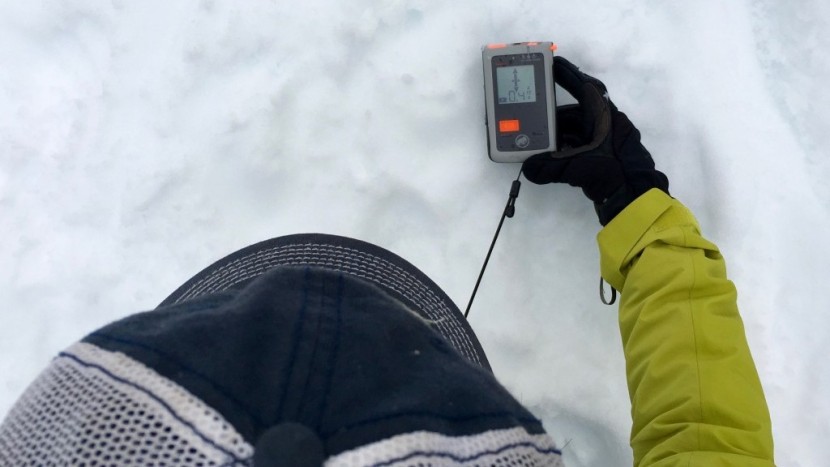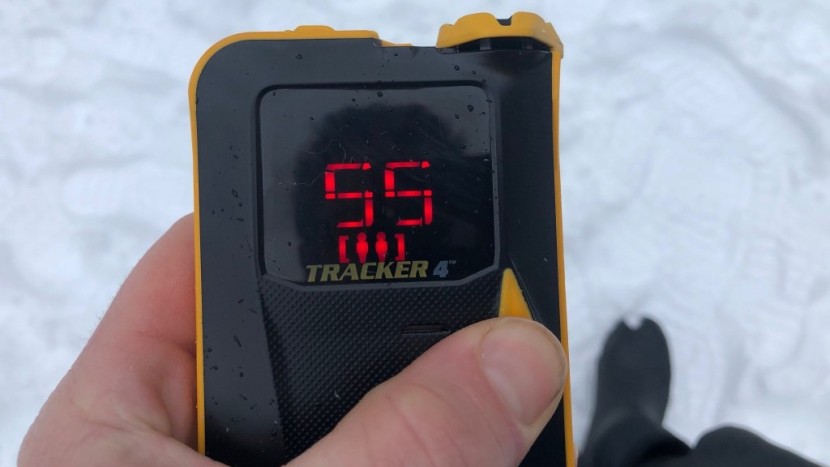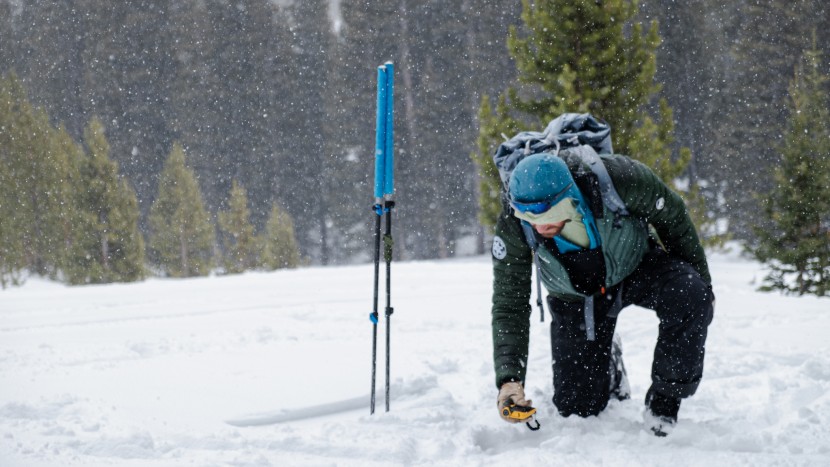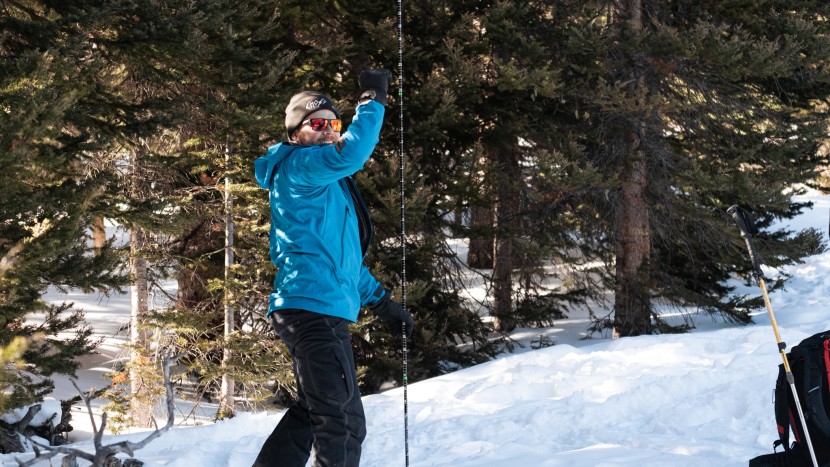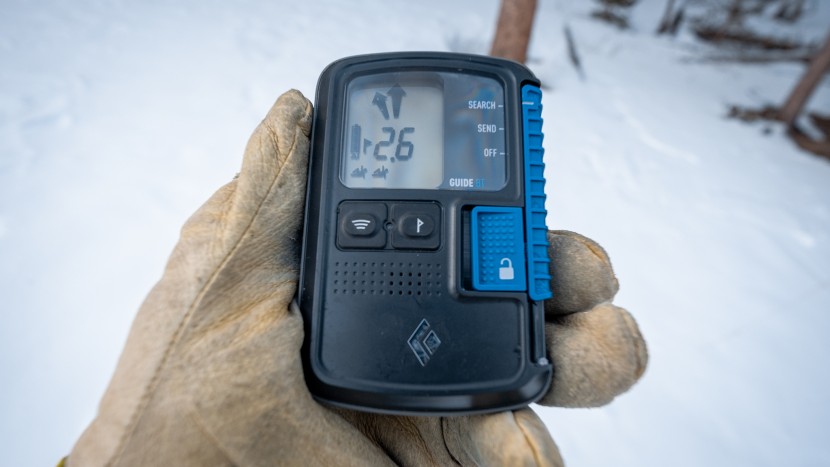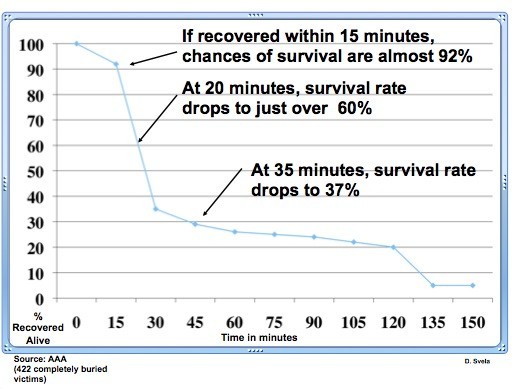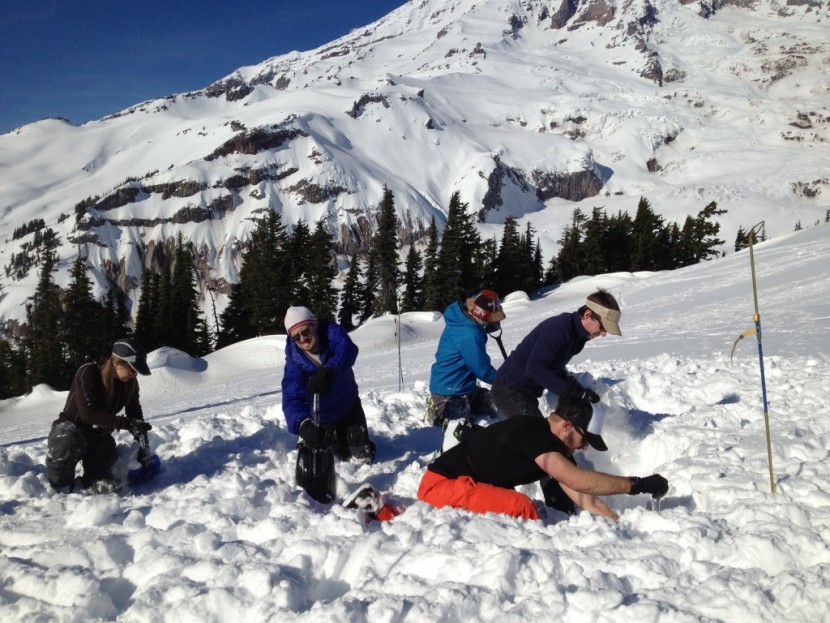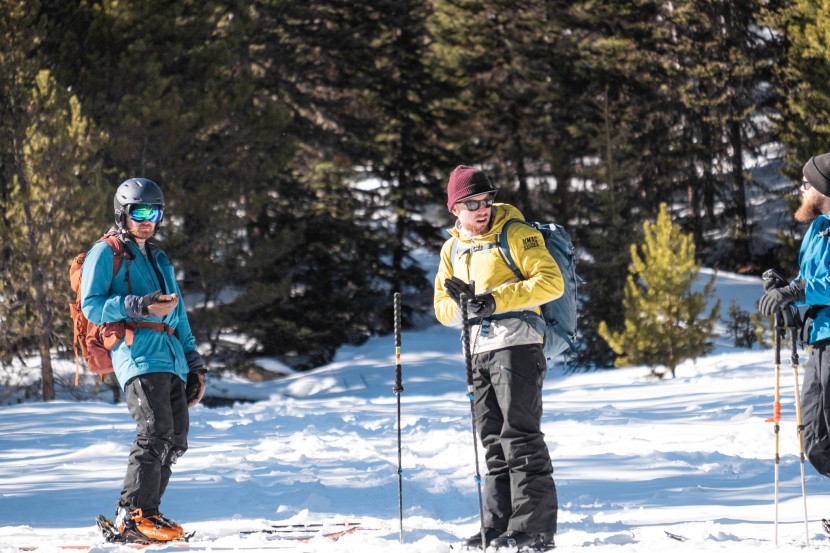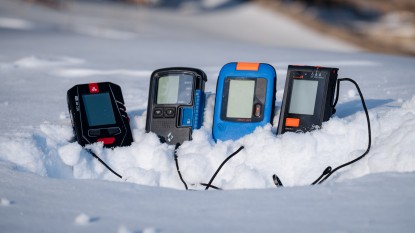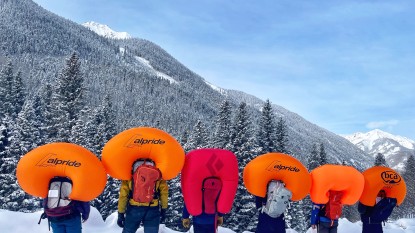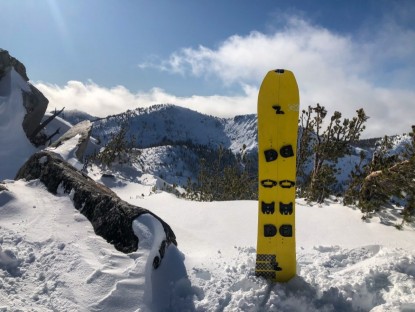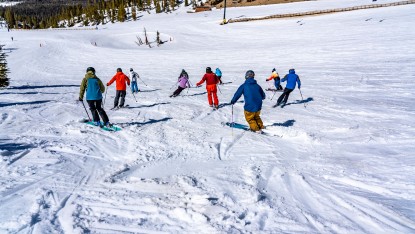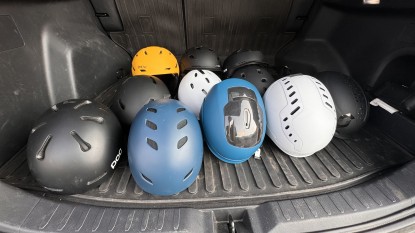How do different models of avalanche beacons differ, and which one is the best option for you? In this article, we discuss the fundamentals of how beacons work, take a look at current technology, and examine some key features to consider. There are a number of beacons on the market, which, we admit, all look very similar. Our in-depth avalanche beacons review puts the top models side-by-side to compare their nuanced differences. This article will provide some context so that you better understand who will benefit from certain features and point out important factors to consider when buying this crucial piece of backcountry safety equipment.
How Do Avalanche Beacons Work?
Avalanche beacons – also known as avalanche transceivers – have changed significantly over the past decade. Not long ago, there were still a handful of manual dial-down beacons with no directional arrows. Second-generation, two-antenna models suffered from “signal spikes” (also known as the shadow box effect), which greatly disrupted their usefulness in multiple burials. Fortunately, the modern triple-antenna transceivers that now dominate the market are faster, more advanced, and much easier to use.
The Different Stages Of The Search
We reference different stages of a beacon search during our discussions: a signal search (also known as signal acquisition), followed by a coarse search, followed by a fine search. While there are some colloquial variations, these are internationally standard terms commonly used in Canada as well as the alpine countries of Western Europe.
Avalanche beacons all fundamentally work by being able to do two things: they can “send” a signal pulse while transmitting, and they can receive that same type of signal while “searching”. Thus, the amalgamated word “transceiver” – these dual-function units are specifically designed to transmit and receive a radio signal. Like a rock dropped in a still pond, the signal emitted from a sending beacon pulses out in three dimensions along “flux lines”. The beacon searching for a signal picks up this pattern, allowing you to follow it into your target – a person buried under the snow – along this slight arc.
Do All Avalanche Beacons Work Together?
A common question people have is: "Do all avalanche beacons work on the same frequency? Yes; as of 2007, the internationally accepted standard is that all beacons, everywhere in the world, work on a 457 kHz frequency. There used to be multiple standard frequencies, but we do not recommend using a beacon older than the international standard, nor does any beacon manufacturer.
In search mode, all modern beacons provide both directional arrows, which helps keep you on the flux line. Beacons also provide a distance reading indicating how far you are away from your target. (Since backcountry skiing, snowboarding, and winter climbing are international sports, all of the readings are in meters.) It's important to note that this is an estimated distance approximated along the flux line rather than a straight line to the buried signal. It's also important to remember that this signal is a “pulse” of information rather than a continuous feed. So, if your arrow is in the middle but your numbers are getting bigger, you are going the wrong way.
Electromagnetic Interference
All electronics – cell phones, smart watches, radios, heated gloves, GoPros, snowmobiles – emit electromagnetic waves. This “unwanted noise” can interfere with a beacon's ability to transmit and receive signals. This is of critical concern when proper function can mean the difference between life and death.
Recently, the UIAA – the International Climbing and Mountaineering Federation responsible for certifying safety standards for climbing and skiing equipment – issued a comprehensive position statement on the issue, alongside recommendations for carrying electronics to avoid interference.
There has been a lot of discussion around electromagnetic interference in recent years, and if you're interested in a deep-dive into EMI, Black Diamond's QC Lab produced an easily digestible article on the subject.In addition to direction and distance, all beacons emit an audible tone, or “beep,” that gets louder and more rapid as the strength of the signal increases. It's important to engage all of the senses under the stress of an avalanche rescue, and this additional sensory input helps provide you with more feedback as your position changes relative to the buried beacon.
Most beacon's directional arrows disappear a few meters away from a target, cueing their rescuer to start the fine search phase. This is the most challenging part of a beacon search – it is where most people make mistakes and the piece that generally requires the most practice to perfect. Nailing a fine search helps improve efficiency during probing – the critical next step in a rescue – which is why we so closely examine a beacon's ease of use and accuracy in the fine search phase.
De-Tuning Over Time
Avalanche beacons are delicate pieces of electronic equipment and need to be treated as such. Even though they're designed for the rough-and-tumble aspects that go hand-in-hand with getting caught in an avalanche, throwing them around carelessly could crack or damage the internal antennas.
Unfortunately, and despite our best efforts, over time, all beacons will de-tune. The resulting signal drift will dramatically affect, or worse, completely impair your ability to search or be found. You should perform function checks regularly, but generally, it is a good idea to replace your beacon every 5-7 years. Fortunately, this timeframe seems to align well with major leaps in technology.Buy For Your Level Of Experience
All beacons are significantly easier to use than they were even ten years ago, but now, many models are being designed with specific user groups in mind, so you'll want to choose carefully based on your level of experience.
Novice
If you're a novice backcountry skier or rider who only goes out a handful of times every year, you are not doing yourself any favors by buying a high-end beacon. Not only are these beacons more complex to use, but novice users likely won't take advantage of the advanced features that make these models cost more in the first place. Instead, never-evers and novice backcountry skiers are better served by simple, intuitive beacons – ones designed to be fast and easy to use.
Intermediate
If you are an intermediate to advanced-level backcountry skier – or you're aspiring to be so – seek out a beacon that includes some additional functions. Namely, look for a mid-level beacon that also includes a marking or flagging feature. This feature is included on many models we tested, and is incredibly useful for working through complex, multi-burial scenarios. It's worth noting that models in the BCA Tracker series lack a classic “marking function”. Instead, their platform uses a combination of Signal Suppression and Big Picture modes, which, with some practice, can be nearly as effective.
Advanced
Higher-level users – including aspiring guides, ski patrollers, or other avalanche professionals – who will benefit from a feature-rich beacon should consider investing in a top-tier transceiver. While these beacons are targeted towards professionals, more advanced users – like trip leaders – who are likely to take advantage of their additional features will find that they are well worth the extra money. As with all things that get more complicated, the differences between these beacons are nuanced, and some are better for particular reasons and uses than others. Consider your own practice against each model's suite of features to help identify which one is best for you. Regardless of your level of training, if you'd rather have an easy-to-use beacon whose only feature is a flagging function, you might as well save some money and opt for a mid-level beacon.
Important Factors to Consider
Between products, there are differences in processor speed and accuracy, range, functions, and features. However, the more familiar and proficient you are with your beacon, the faster you will perform a rescue. While we found some models better or easier to use than others, all of the products we chose for our review work well. Regardless of which one you buy, remember that practice is essential, especially with the stress of someone's life on the line.
Ease of Finding a Single Burial
The ease of finding a single victim is hands down the most important characteristic of a beacon. Folks love to brag about all kinds of fancy features, but when it comes down to it, none of them matter if you can't quickly find your partner. Even multiple burial techniques can be broken down into a series of single-burial searches stacked on top of one another. Of course, the efficiency of a single-burial search comes down to the speed and accuracy of your beacon (and your technique!).
Speed
Speed is the most important factor to consider when purchasing a beacon. As we say, “in a game of minutes, every second counts.” The processor speed will determine how quickly and smoothly your beacon updates you with directional and distance information – any lag in acquiring a signal, jumping flux lines, or any other “hiccup” is going to hamper an expedient rescue. While speed, to a large extent, is a product of practice, having a speedy processor is invaluable.
Accuracy
The part of the search that most rescuers struggle with the most is the fine search. This phase starts under five meters, where you must refine your search down to the lowest number. With nearly all beacons, the arrows disappear within 2-3 meters of the target, so it is imperative to keep your beacon in the same orientation – many users will use a “bracketing” technique to find the smallest number along the X and Y axes. While accuracy plays a role in the signal and coarse search phases, the fine search iis where we noticed the greatest difference between beacons and, depending on their level of training, the greatest difference in how accurately a searcher centered the beacon over a buried target. Precision played a large role in the overall speed of a search.
Range
Maximum range is important, but not nearly as important as the previous three factors. Folks love to talk about range, likely because it is an easily quantifiable way to compare beacons. While range theoretically increases your search strip width, thus allowing you to search a larger area faster, beacons rarely work at their marketed maximum ranges in a real-world rescue. This is because manufacturers test range under conditions of “ideal coupling,” where beacons are oriented to perfectly align their antennas. Since this condition rarely exists when someone comes to rest underneath the snow after tumbling down a mountain in an avalanche, it's tough to justify range as a determining factor. Regardless of marketing claims, we've measured an industry-average range of 44 meters; the best practice is a search strip width of approximately 30 meters to accommodate even the smallest ranges on the market.
Multiple Burials
Terms like “marking,” "flagging," and “signal suppression” all refer to the searching beacon's ability to ignore a buried beacon's signal. These functions are very useful for solving multiple burial scenarios, but their importance is often overemphasized. The majority of avalanche accidents that involve a burial are single-burial incidents – that's why a beacon's performance in single-burial scenarios is our primary consideration. These advanced functions are sought out by ski guides, ski patrollers, and other avalanche workers because during professional-level examinations, they are all required to pass an avalanche rescue drill which involves locating multiple buried targets in a limited amount of time. That's not to say that these incidents are unlikely, but more often than not, they are handled using single-burial techniques.
Advanced Features
There are lots of snazzy features included in modern beacons of all levels – Bluetooth connectivity, group check, analog mode, revert-to-send, lithium battery settings, EMI sensors, and voice commands. We appreciate many of these features and find nearly all of them useful, which is why we discuss notable features within individual gear reviews. But when it comes down to it, none of them are as important as the core functions of a beacon: the speed, accuracy, and ease of use related to searching for a single victim. In choosing a new beacon, be realistic about your experience and your needs — is it worth spending the extra money for those extra features or not?
"The Best Beacon Is The One You Are Most Practiced With"
No matter how advanced the beacon is that you decide to purchase, training and regular practice are essential. Experienced backcountry enthusiasts and avalanche professionals can locate and dig out multiple beacons buried up to one meter deep in under seven minutes, while unpracticed novices can easily take 25 minutes or more. The point is that beacon skills can be mastered, and proficiency can make a difference in saving your ski partner's life.
A Few Statistics
On average, 36 people die from avalanches in North America every year, and around 185 people worldwide. In North America, roughly one-third of those deaths are a result of trauma, and the other two-thirds are a result of asphyxiation. Wearing an avalanche beacon doesn't guarantee survival in an avalanche, and the fact that you are wearing one should not persuade you to ski, snowboard, or snowmobile in a way you otherwise wouldn't.
Only One Piece Of The Puzzle
Wearing an avalanche beacon but not carrying both a shovel and probe is negligent – a beacon gets you close to a buried victim, but a probe is what actually pinpoints their exact location, and then a shovel efficiently digs them out. The average burial depth in North America is around 1.3 meters (4.3 feet), which equates to around 1.5 tons of snow. Proficiency with your beacon and probe allows maximum time for the tough work of shoveling. Studies of burials in Austria and Switzerland still indicate median extraction times for survivors between 15 and 25 minutes. Considering the correlation between burial times and survival rates – with that all-important cutoff of 15 minutes – it's paramount to maximize efficiency in all of the steps required in an avalanche rescue.
The Importance of Avalanche Education
We highly recommend taking an introductory avalanche course – a three-day, Recreational Level or a one-day, standalone Avalanche Rescue course – from an American Avalanche Association recognized provider. Additionally, you should consider retaking a course if you haven't taken one in the past 5-10 years. Best practices in the field continue to be refined, and the curriculum has changed considerably in that time. It is rare to encounter a person who did not find value in retaking a Rec Level 1, even if they have taken a course several years prior.

